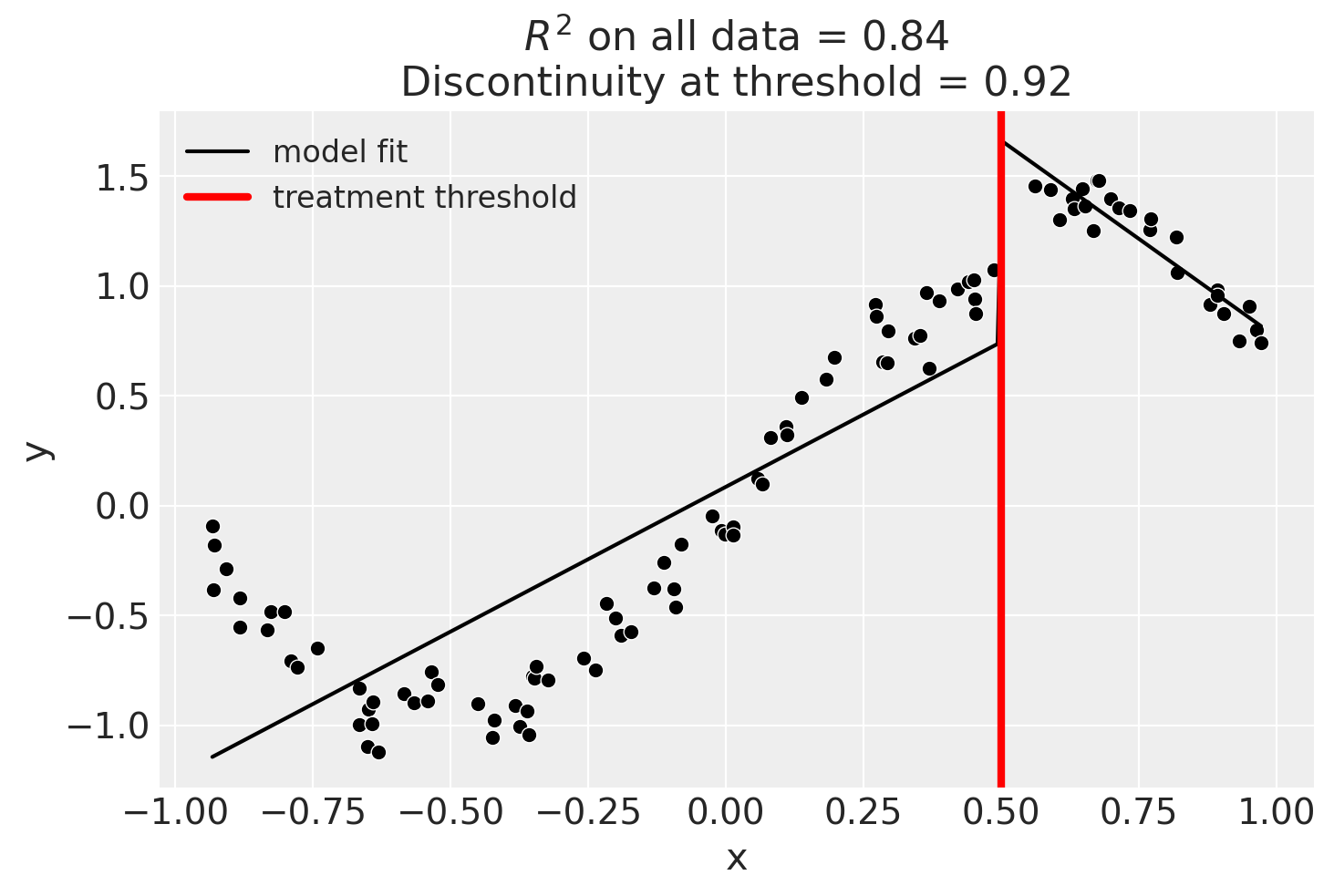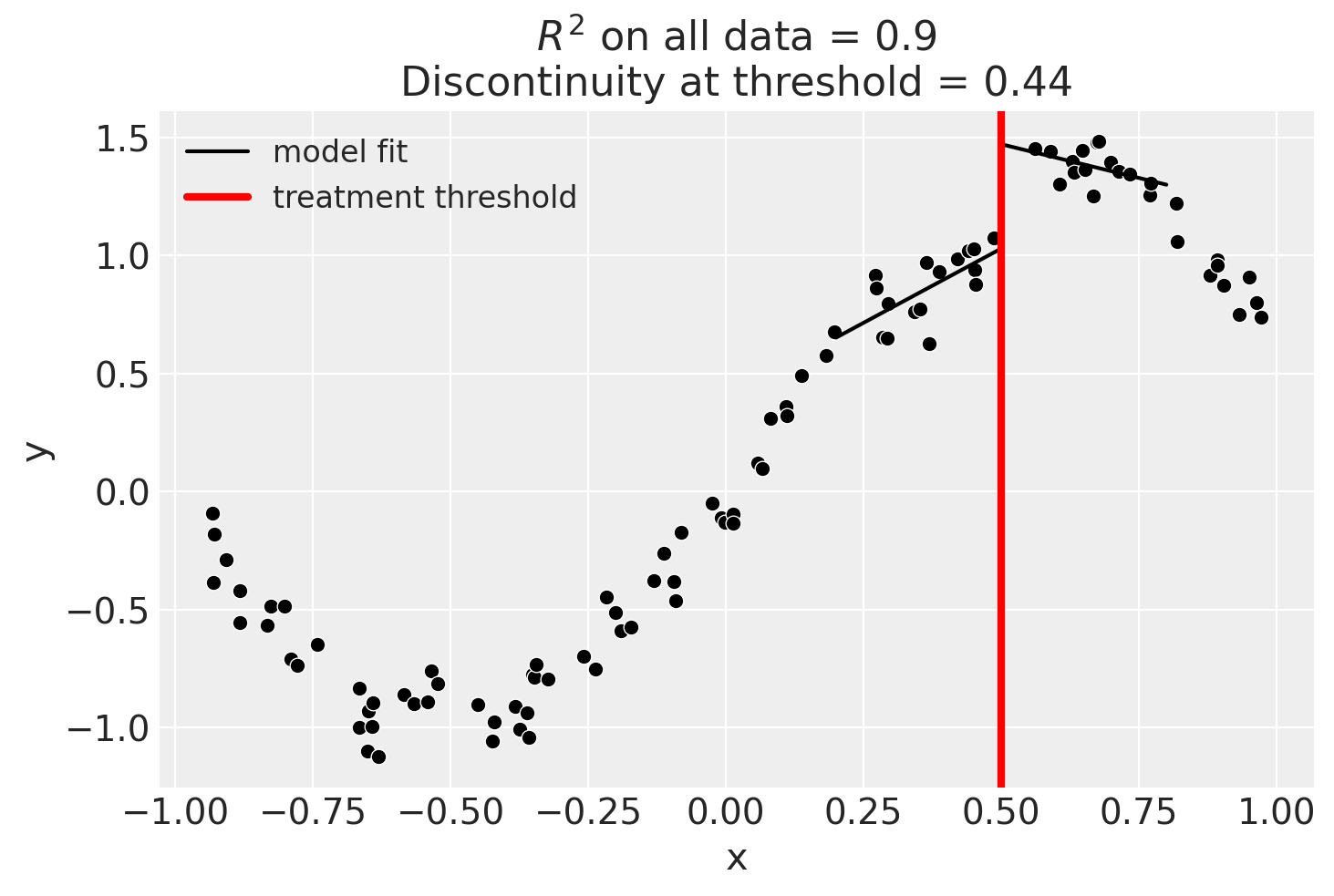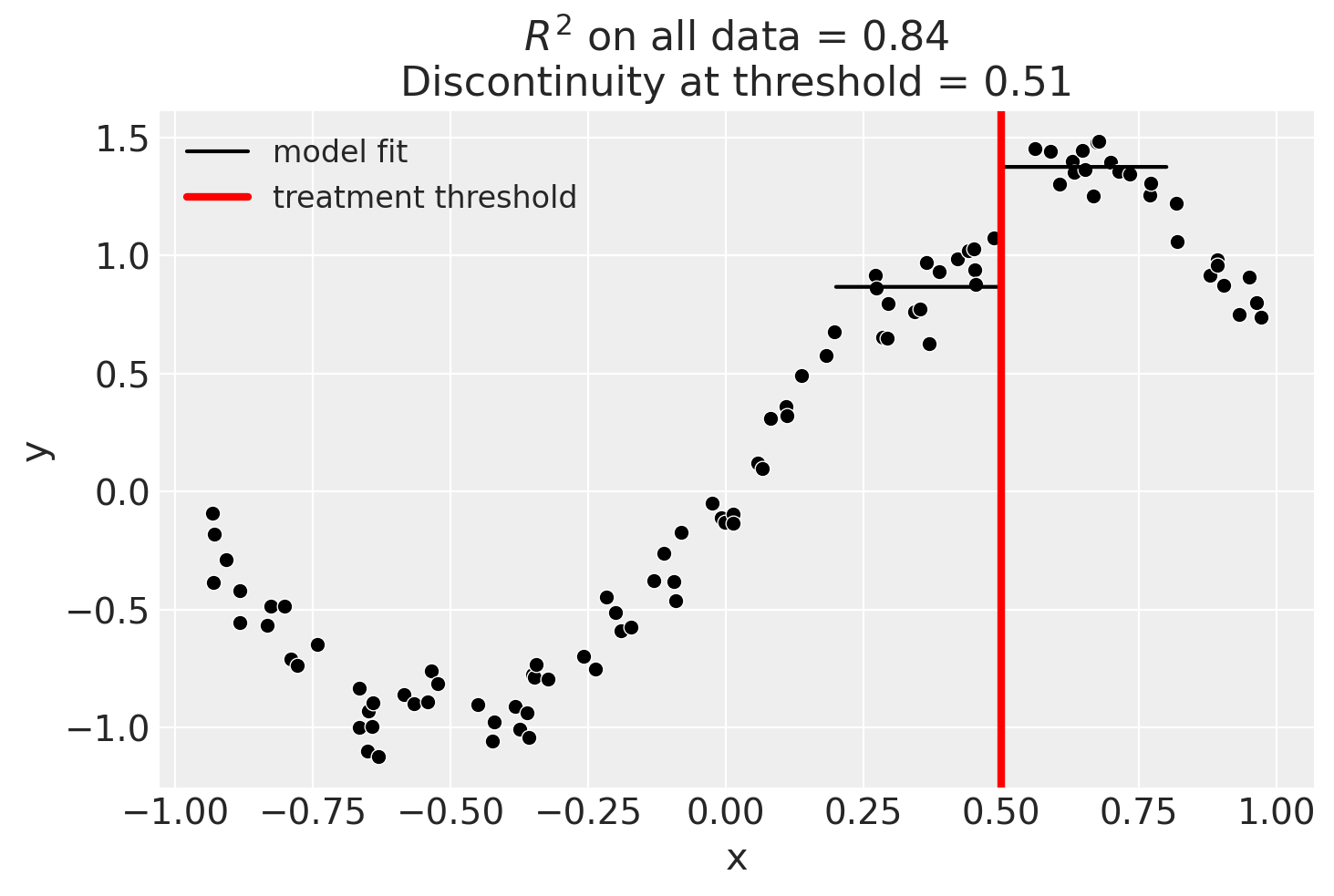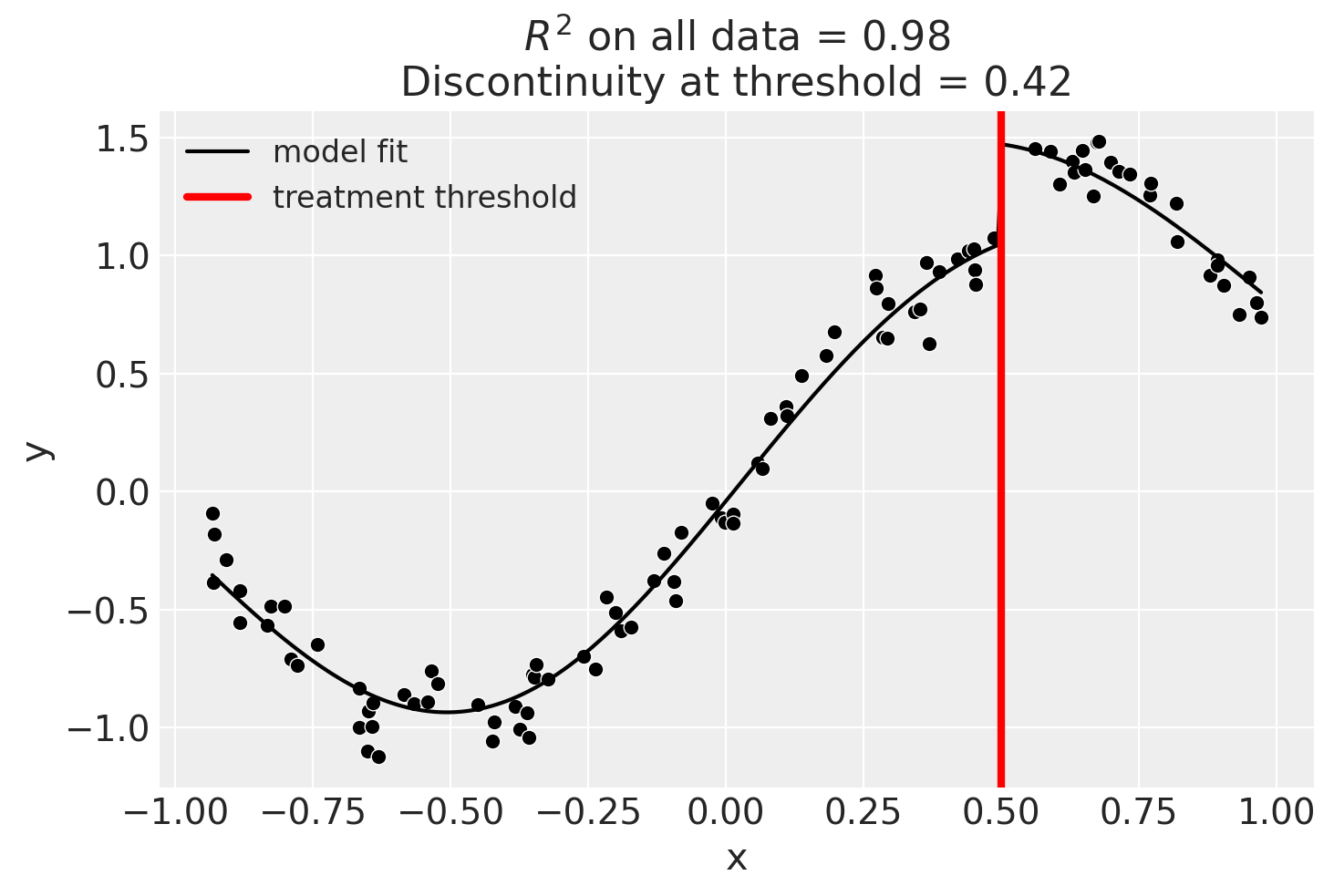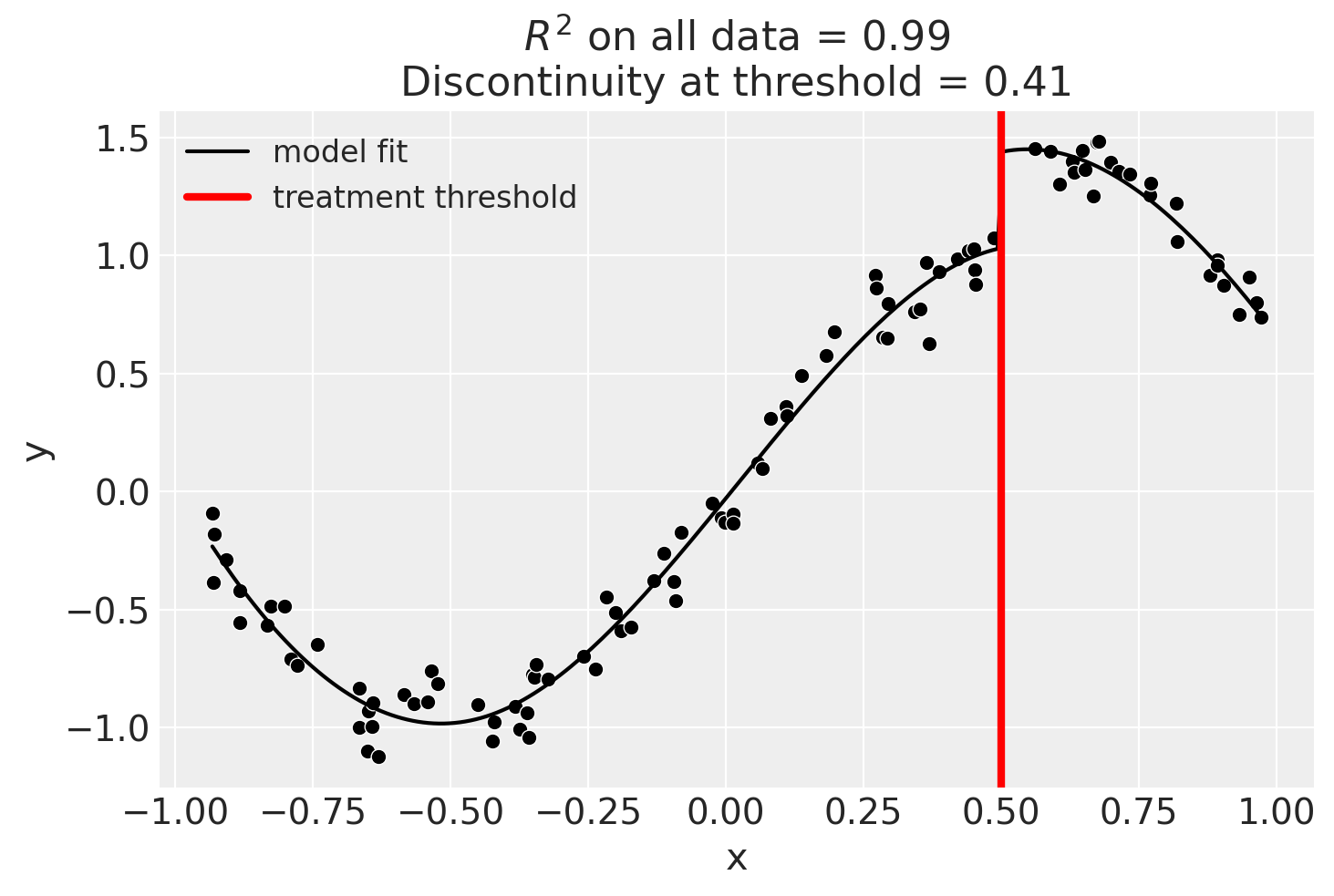Regression discontinuity with sci-kit learn models#
from sklearn.gaussian_process import GaussianProcessRegressor
from sklearn.gaussian_process.kernels import ExpSineSquared, WhiteKernel
from sklearn.linear_model import LinearRegression
import causalpy as cp
%config InlineBackend.figure_format = 'retina'
Load data#
data = cp.load_data("rd")
data.head()
| x | y | treated | |
|---|---|---|---|
| 0 | -0.932739 | -0.091919 | False |
| 1 | -0.930778 | -0.382663 | False |
| 2 | -0.929110 | -0.181786 | False |
| 3 | -0.907419 | -0.288245 | False |
| 4 | -0.882469 | -0.420811 | False |
Linear, main-effects model#
result = cp.RegressionDiscontinuity(
data,
formula="y ~ 1 + x + treated",
model=LinearRegression(),
treatment_threshold=0.5,
)
fig, ax = result.plot()
/Users/benjamv/opt/mambaforge/envs/CausalPy/lib/python3.11/site-packages/IPython/core/pylabtools.py:77: DeprecationWarning: backend2gui is deprecated since IPython 8.24, backends are managed in matplotlib and can be externally registered.
warnings.warn(
/Users/benjamv/opt/mambaforge/envs/CausalPy/lib/python3.11/site-packages/matplotlib_inline/config.py:68: DeprecationWarning: InlineBackend._figure_format_changed is deprecated in traitlets 4.1: use @observe and @unobserve instead.
def _figure_format_changed(self, name, old, new):
/Users/benjamv/opt/mambaforge/envs/CausalPy/lib/python3.11/site-packages/IPython/core/pylabtools.py:77: DeprecationWarning: backend2gui is deprecated since IPython 8.24, backends are managed in matplotlib and can be externally registered.
warnings.warn(
/Users/benjamv/opt/mambaforge/envs/CausalPy/lib/python3.11/site-packages/IPython/core/pylabtools.py:77: DeprecationWarning: backend2gui is deprecated since IPython 8.24, backends are managed in matplotlib and can be externally registered.
warnings.warn(
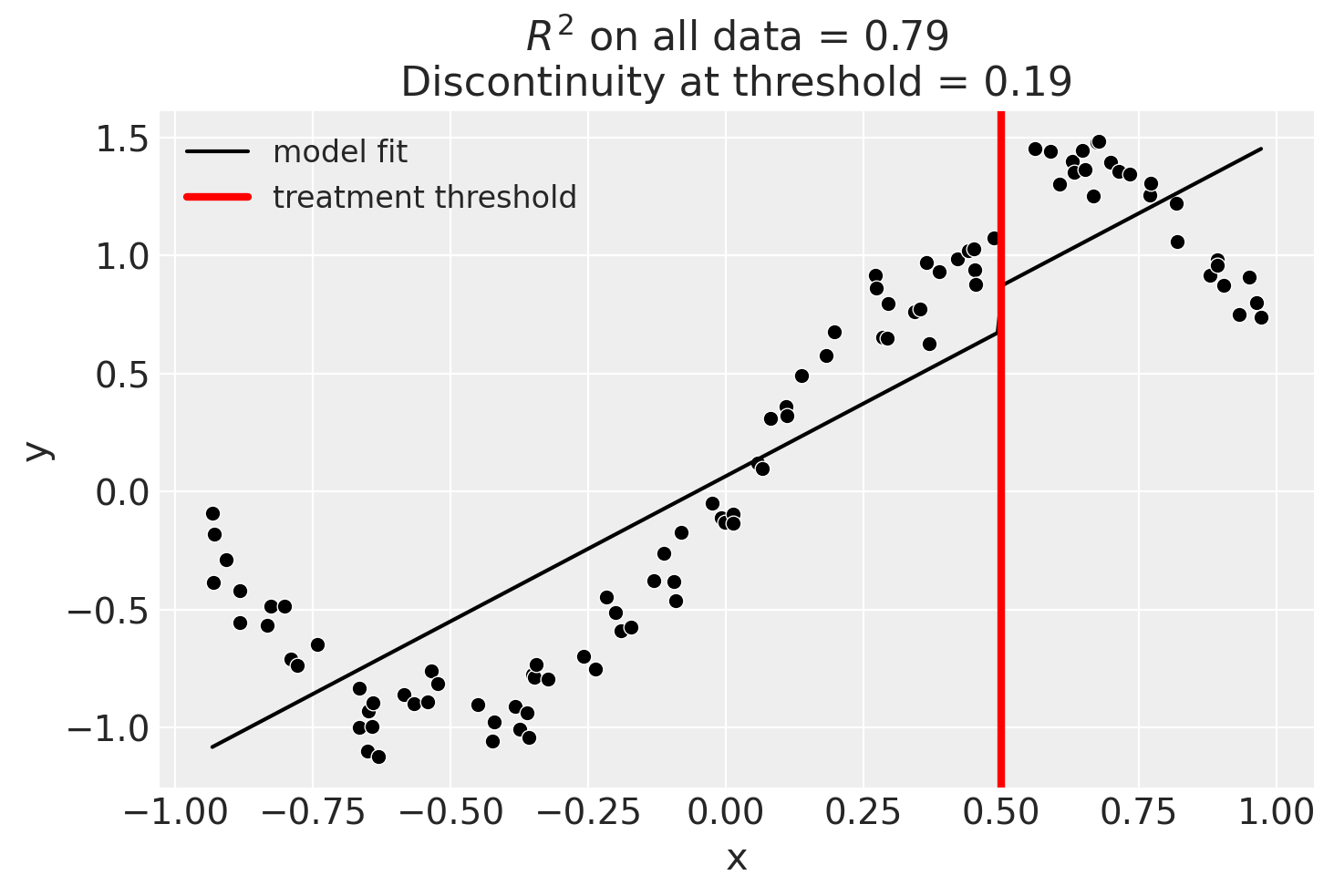
result.summary(round_to=3)
Difference in Differences experiment
Formula: y ~ 1 + x + treated
Running variable: x
Threshold on running variable: 0.5
Results:
Discontinuity at threshold = 0.19
Model coefficients:
Intercept 0
treated[T.True] 0.19
x 1.23
Linear, main-effects, and interaction model#
result = cp.RegressionDiscontinuity(
data,
formula="y ~ 1 + x + treated + x:treated",
model=LinearRegression(),
treatment_threshold=0.5,
)
Though we can see that this does not give a good fit of the data almost certainly overestimates the discontinuity at threshold.
result.summary(round_to=3)
Difference in Differences experiment
Formula: y ~ 1 + x + treated + x:treated
Running variable: x
Threshold on running variable: 0.5
Results:
Discontinuity at threshold = 0.92
Model coefficients:
Intercept 0
treated[T.True] 2.47
x 1.32
x:treated[T.True] -3.11
Using a bandwidth#
One way how we could deal with this is to use the bandwidth kwarg. This will only fit the model to data within a certain bandwidth of the threshold. If \(x\) is the running variable, then the model will only be fitted to data where \(threshold - bandwidth \le x \le threshold + bandwidth\).
result = cp.RegressionDiscontinuity(
data,
formula="y ~ 1 + x + treated + x:treated",
model=LinearRegression(),
treatment_threshold=0.5,
bandwidth=0.3,
)
result.plot();
We could even go crazy and just fit intercepts for the data close to the threshold. But clearly this will involve more estimation error as we are using less data.
Using Gaussian Processes#
Now we will demonstrate how to use a scikit-learn model.
kernel = 1.0 * ExpSineSquared(1.0, 5.0) + WhiteKernel(1e-1)
result = cp.RegressionDiscontinuity(
data,
formula="y ~ 1 + x + treated",
model=GaussianProcessRegressor(kernel=kernel),
treatment_threshold=0.5,
)
Using basis splines#
result = cp.RegressionDiscontinuity(
data,
formula="y ~ 1 + bs(x, df=6) + treated",
model=LinearRegression(),
treatment_threshold=0.5,
)
result.summary(round_to=3)
Difference in Differences experiment
Formula: y ~ 1 + bs(x, df=6) + treated
Running variable: x
Threshold on running variable: 0.5
Results:
Discontinuity at threshold = 0.41
Model coefficients:
Intercept 0
treated[T.True] 0.407
bs(x, df=6)[0] -0.594
bs(x, df=6)[1] -1.07
bs(x, df=6)[2] 0.278
bs(x, df=6)[3] 1.65
bs(x, df=6)[4] 1.03
bs(x, df=6)[5] 0.567

